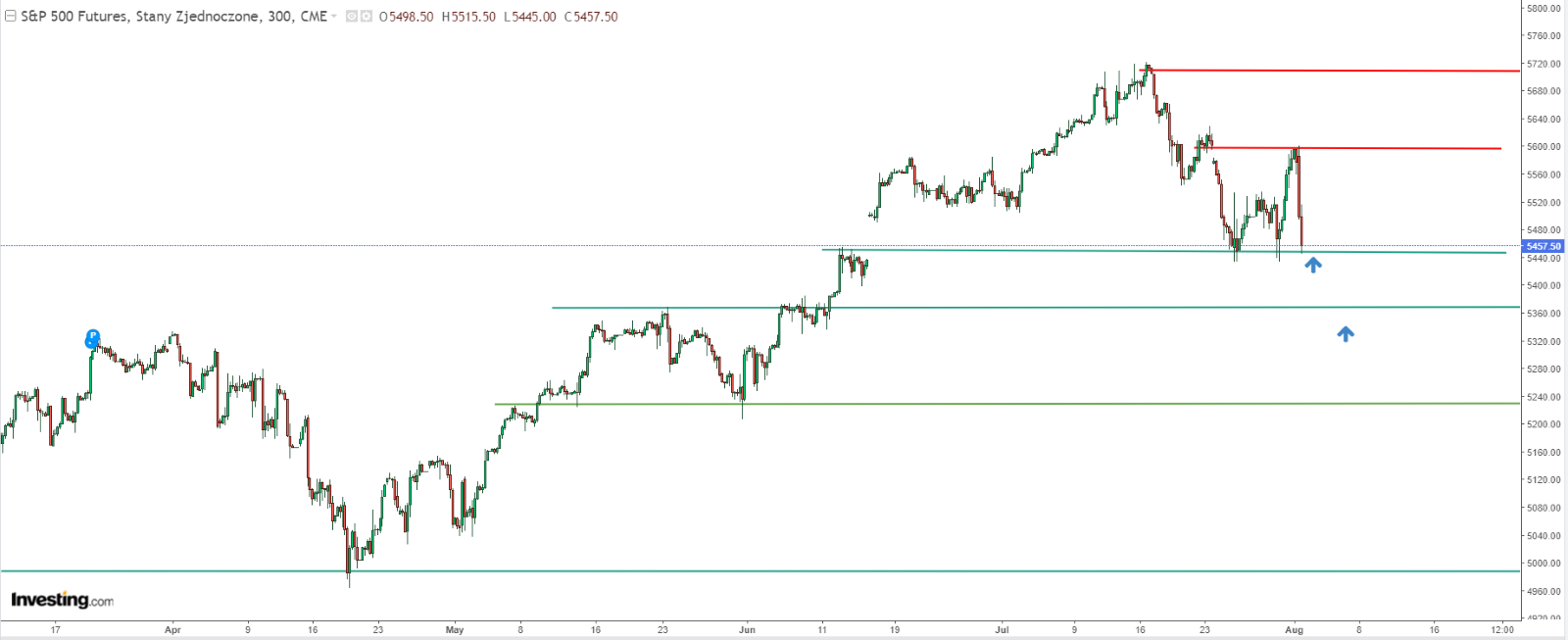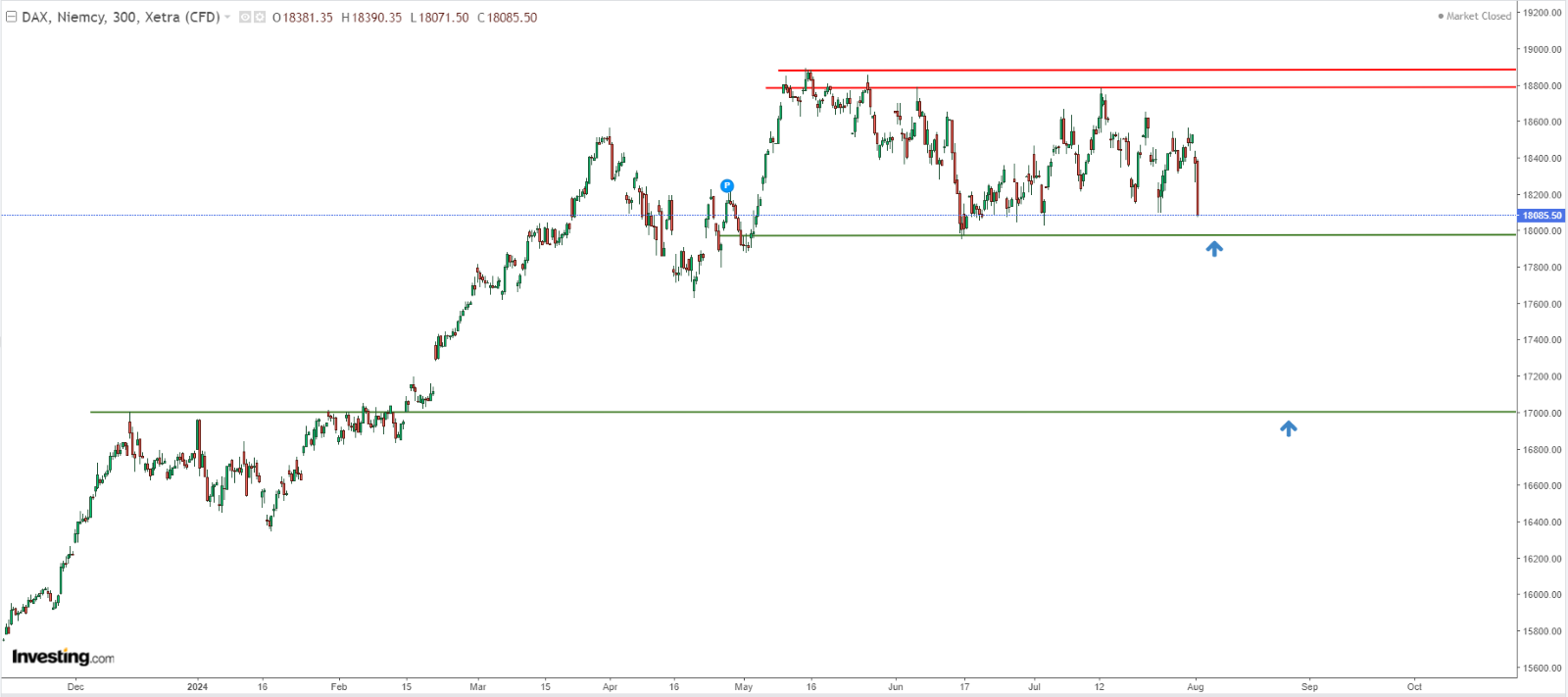- Weak economic data raises concerns about a sharper-than-expected slowdown.
- Market sentiment sours as manufacturing data disappoints.
- S&P 500 faces do-or-die test at critical support levels.
The Federal Reserve’s turn towards dovish policies initially lifted market spirits during the week. Nevertheless, the release of lackluster US industrial data quickly doused investor optimism, hinting at a more rapid economic deceleration than previously thought.

The S&P 500 and other key indices retraced gains as traders reevaluated their expectations of a September rate cut. Attention now shifts to forthcoming economic indicators to decipher the Fed’s future monetary policy.
In Europe, the German DAX index demonstrates fragility, signaling a potential deeper decline. The index’s consolidation has formed a crucial support area, the breach of which could accelerate downside movement.
S&P 500 Treads Precariously
The S&P 500’s recent trajectory resembles a rollercoaster ride, with conflicting signals and economic data. Sellers currently dominate, repeatedly challenging the support near 5,440 points.
If this downward momentum persists, a breakthrough below this support level is expected, setting sights on the subsequent barrier close to 5,400 points. Further decline may target around 5,200 points.

A bullish scenario, contingent on surpassing the newfound resistance at 5,600 points, could nullify the bearish outlook, potentially pushing for recent highs.
DAX Index: Bears Eye Lower Ground
Since early May, the DAX has traded sideways, with a historical high of 18,900 points capping its upward moves.
Despite an earlier failure by bulls to break this ceiling, bearish forces are now gearing up to capitalize on this weakness. Investors should monitor the lower limit of the consolidation zone around 18,000 points.

A breach of this crucial support would signal a clear bearish trend, potentially spiraling down to 17,000 points.
This projection hinges on sustained negative sentiments surrounding global equities, which could be aggravated by geopolitical tensions in the Middle East.
